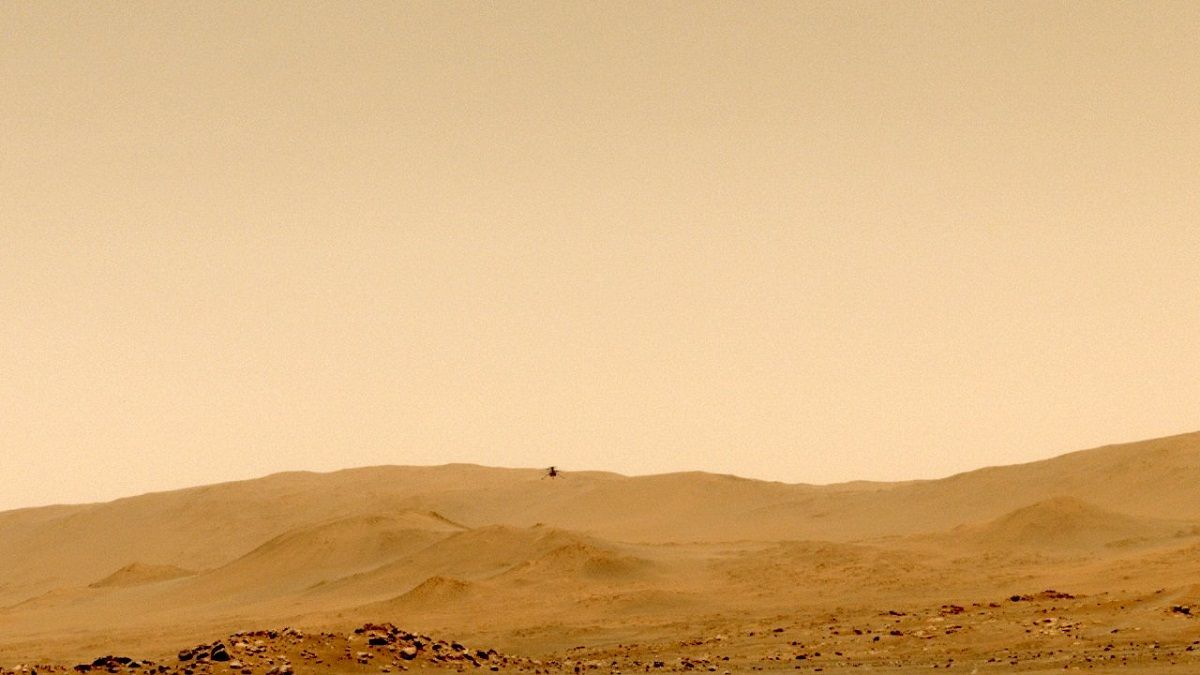Cape Canaveral: NASA’s Perseverance rover has again made history as the first spacecraft to record sounds from another spacecraft on another planet. This was achieved during the Ingenuity helicopter’s fourth flight on April 30 and NASA has now released the audio captured by its Mars rover in which the chopper can be heard humming through the thin Martian air.
NASA’s Jet Propulsion Laboratory in California released this first-ever audio on Friday, just before Ingenuity made its fifth test flight, a short one-way trip to a new airfield.
During the fourth flight a week earlier, the low hum from the helicopter blades spinning at more than 2,500 revolutions per minute is barely audible. It almost sounds like a low-pitched, faraway mosquito or other flying insect.
That’s because the 4-pound (1.8-kilogram) helicopter was more than 260 feet (80 meters) from the microphone on the Perseverance rover. The rover mission wasn’t sure if the microphone would pick up any sound of the flight.
Even during flight, when the helicopter’s blades spin at 2,537 rpm, the sound is greatly muffled by the thin Martian atmosphere. It is further obscured by Martian wind gusts during the initial moments of the flight.
Listen closely, though, and the helicopter’s hum can be heard faintly above the sound of those winds. Scientists isolated the sound of the whirring blades and magnified it, making it easier to hear.
I’ve seen what the #MarsHelicopter can do – and now I’ve heard it.
🎧 Grab headphones and listen to the otherworldly hum of Ingenuity’s blades as it headed south to scout a new area on its fourth flight.
How I captured both sight and sound: https://t.co/95J9X3bcyO pic.twitter.com/Lw44x7kqYZ
— NASA’s Perseverance Mars Rover (@NASAPersevere) May 7, 2021
Ingenuity the first powered aircraft to fly at another planet arrived at Mars on Feb. 18, clinging to Perseverance’s belly. Its first flight was April 19; NASA named the takeoff and landing area Wright Brothers Field in honor of Wilbur and Orrville, who made the world’s first airplane flights in 1903. A stamp-size piece of wing fabric from the original Wright Flyer is aboard Ingenuity.
The USD 85 million tech demo was supposed to end a few days ago, but NASA extended the mission by at least a month to get more flying time.
For Friday afternoon’s 108-second test flight, the helicopter traveled southward in the same direction the rover is heading. Once over its new airfield, the chopper soared to twice its previous altitude 33 feet (10 meters) took pictures, then landed. The two airfields are 423 feet (129 meters) apart.
With the helicopter’s first phase complete, the rover can now start hunting for rocks that might contain signs of past microscopic life. Core samples will be collected for eventual return to Earth.
(With inputs from agencies)
